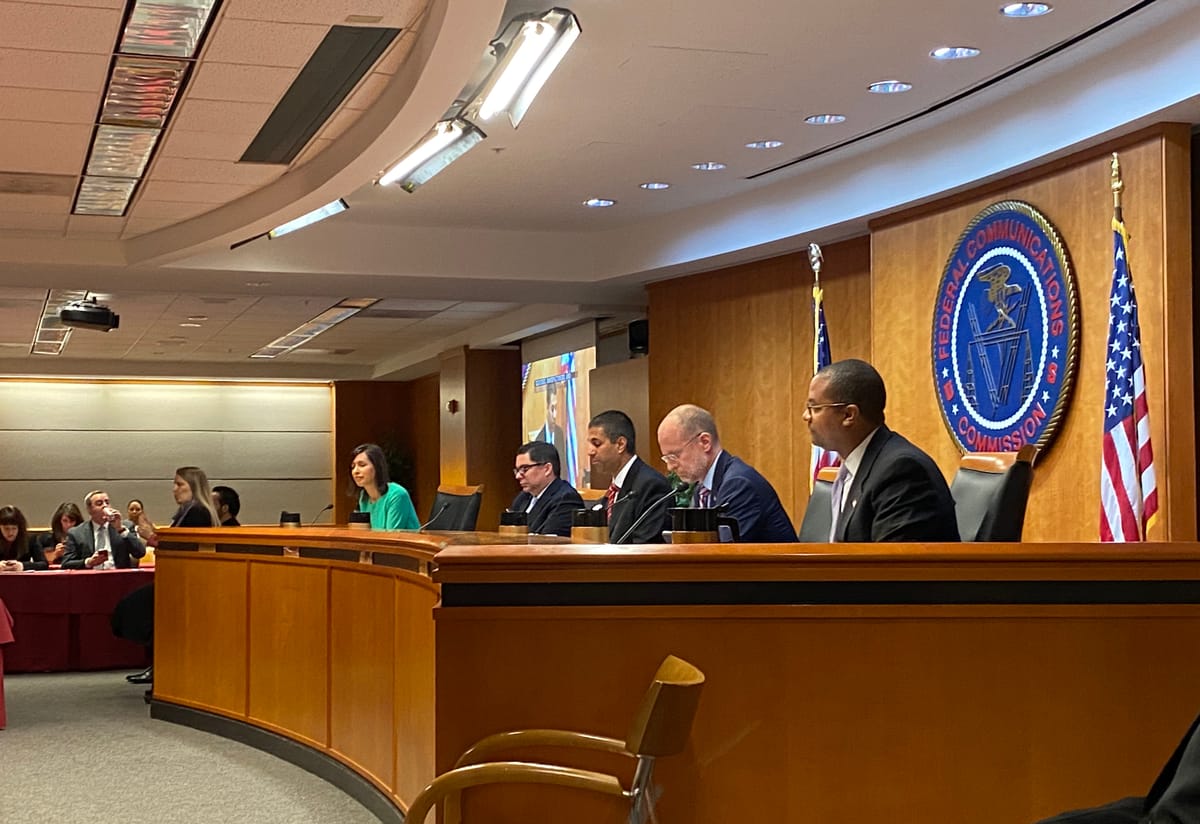After Changes, FCC Approves Rural Digital Opportunity Fund For More Than $20 Billion
WASHINGTON, January 30, 2020 – The Federal Communications Commission voted in favor of the Rural Digital Opportunity Fund on Thursday in spite of concerns voiced from the democratic commissioners Jessica Rosenworcel and Geoffrey Starks. The Rural Digital Opportunity Fund, the successor to the Connec
Adrienne Patton

WASHINGTON, January 30, 2020 – The Federal Communications Commission voted in favor of the Rural Digital Opportunity Fund on Thursday in spite of concerns voiced from the democratic commissioners Jessica Rosenworcel and Geoffrey Starks.
The Rural Digital Opportunity Fund, the successor to the Connect America Fund, and is a decade long initiative to allocate $20.4 billion to closing the digital divide in rural areas that have no broadband access or scattered service.
The fund is split into two phases. The first phase will use the majority of the funds to provide 25/3 Megabits per second (Mbps) broadband speeds (25 down and 3 up) to nearly six million homes and companies that have no access.
Phase one will use $16 billion to serve rural Americans through a multi-round reverse auction.
The second phase, using $4.4 billion including any remaining funds from the first phase, targets partially served census blocks where some homes do not have 25/3 Mbps broadband access.
Chairman Ajit Pai boasted the Rural Digital Opportunity Fund as the “biggest step the FCC has ever taken” to bridge the digital divide and provide digital opportunities to unserved Americans.
Among the key developments discussed at the agency’s open meeting were changes to the letter of credit requirement. Consequently, carrier costs will be reduced nearly 80 percent and is likely to incentivize bidders.
Criticism of Pai’s approach by the Democratic commissioner Rosenworsel
Rosenworcel and Starks voted to approve in part and dissent in part. Both expressed concerns that the funds will not be used in the best interest of the American people because of flaws with the agency’s broadband maps.
She described the FCC’s maps as “notoriously inaccurate” and said that the digital divide cannot be addressed without an accurate broadband map.
Before using billions in funds, the FCC needs to know where there is and isn’t service, said Rosenworcel. She called the new initiative a “broadband publicity stunt,” advocating for a thorough, data driven approach.
Rosenworcel said she worried that many people will be left without service while the FCC exhausts 75 percent of its funds. “We need maps before money, and data before deployment,” she said.
She also urged “ambitious” approaches to balanced download and upload speeds and addressing broadband cost and adoption barricades.
Pai defended the need to promote rural broadband funding now
Asked in the press conference to comment on the inaccuracy of the mapping, Pai said the FCC knows there are people who do not have broadband access but are counted on the maps as being “served.” But he also said he would not stall any longer to address the digital divide.
Countering this statement to the press, Rosenworcel said this was a hasty move to push out funds on an election year. “This feels sloppy,” said Rosenworcel.
Starks voiced his concern that the FCC is sidestepping the states’ efforts to deploy broadband. He mentioned that members of Congress have expressed concern and asked to postpone the vote. The FCC has not tried to examine how the state initiatives are already in action, said Starks.
Concerned at the vague language, Starks said the states were not aware that the areas served by state subsidies would be precluded from the Rural Digital Opportunity Funds. Starks and Rosenworcel were disappointed at this change.
Starks said the FCC “should have taken the time to get this right.” He encouraged taking the time to develop correct maps, affordable broadband service, and holding providers accountable to meet set milestones.
Commissioners Michael O’Rielly and Brendan Carr approved fund
O’Rielly said nearly 8.4 million Americans do not have 10/1 Mbps broadband service. O’Rielly acknowledged the benefit of fiber-based broadband, but said the FCC cannot focus on improving areas that are already served.
The areas that are difficult to serve cannot be left behind, said O’Rielly.
Carr said the digital divide had been ameliorated by about 20 percent in 2019. He touted the merits of the Rural Digital Opportunity Fund to boost 5G infrastructure and aid communities that have no service or only dialup.
Agency officials said auctions for the Rural Digital Opportunity Fund would take place later this year.








Member discussion